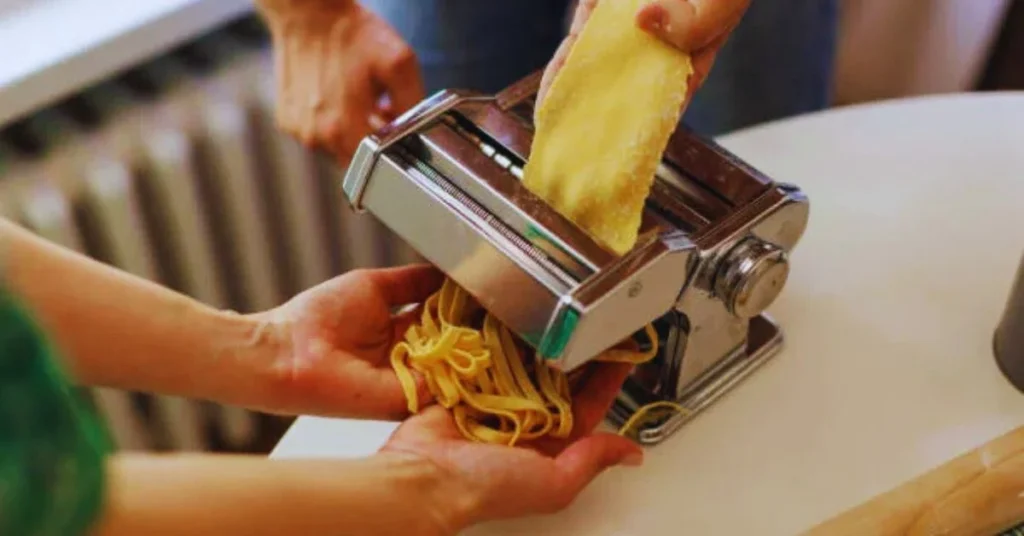Tortellinatrice: The Heart of Modern Tortellini Production
Introduction
A tortellinatrice is a specialized machine designed to automate the production of tortellini, the iconic ring-shaped pasta from Italy. While traditionally handmade by skilled artisans, modern demand for efficiency has made the tortellinatrice an essential tool for both small pasta shops and large-scale manufacturers. This machine bridges the gap between culinary tradition and industrial productivity, enabling the mass production of authentic tortellini while preserving their distinctive shape and quality.
Types of Tortellinatrice
Tortellini (plural) come in various forms to meet different production needs:
- Manual Models – Operated by hand, suitable for small batches and artisanal shops.
- Semi-Automatic Models – Require some manual feeding but automate the folding and sealing processes.
- Fully Automatic Industrial Machines – Used by large factories, capable of producing thousands of pieces per hour with minimal human intervention.
Read More: The Rise of Mason Summey33: A Digital Creator Making Waves
Key Components and Features
A typical tortellinatrice integrates several key parts:
- Dough Sheet Feeder – Rolls and feeds thin pasta sheets into the machine.
- Filling Dispenser – Precisely injects the filling (cheese, meat, vegetables) into the dough.
- Molding and Sealing System – Folds and seals the dough around the filling to form the tortellini shape.
- Cutting and Shaping Units – Cut the pasta into individual pieces with uniform size.
- Control Panel and Automation Features – Allow operators to adjust speed, size, and filling quantity.
Working Process
The process starts with preparing the pasta dough and the desired filling. Thin sheets of dough are fed into the machine, where the filling is deposited at set intervals. The machine then folds the dough around the filling, presses the edges to seal it, and cuts the pieces into perfect tortellini shapes. Finally, the ready-made tortellini exit the machine onto a conveyor belt or tray for drying, cooking, or packaging.
Advantages of Using a Tortellinatrice
Using a tortellinatrice offers several advantages:
- High Speed and Efficiency – Produces large volumes quickly.
- Consistent Size and Quality – Ensures uniform appearance and weight.
- Reduced Labor Costs – Minimizes the need for manual labor.
- Scalability – Meets both small business and industrial-level production demands.
Applications and Users
Tortellini are widely used in:
- Small Pasta Shops and Restaurants – To increase daily output without losing authenticity.
- Large Pasta Factories – To meet market demand efficiently.
- Culinary Schools and Training Centers – As educational tools for students learning pasta-making techniques.
Maintenance and Safety
Proper care extends the life and performance of the machine:
- Cleaning Procedures – Daily cleaning of all parts that contact dough or filling.
- Regular Maintenance – Scheduled lubrication and part inspections.
- Safety Training – Operators should follow safety protocols to avoid injuries during operation and cleaning.
Market and Buying Considerations
Before purchasing, businesses should consider:
- Production Capacity and Price Range – Selecting a model that aligns with their output requirements.
- Brand Reputation and Warranty – Reliable brands with strong after-sales support.
- Spare Parts and Technical Support – Easy availability of parts and local servicing.
Future Trends
The pasta industry is evolving, and so are tortellinatrici:
- AI and Smart Automation – Enhancing precision and reducing waste.
- Eco-Friendly Designs – Machines built for lower energy and water consumption.
- Customization – Allowing users to produce different pasta shapes and gourmet variations.
FAQs About Tortellinatrice
Q1. What is a tortellinatrice?
A tortellinatrice is a specialized machine used to automate the production of tortellini, folding pasta dough around filling to create uniform pieces.
Q2. Who typically uses a tortellinatrice?
They are used by small pasta shops, restaurants, large pasta factories, and culinary schools to produce consistent and high-volume tortellini.
Q3. Are there different types of tortellinatrici?
Yes, they come in manual, semi-automatic, and fully automatic models depending on the production scale and user needs.
Q4. What are the main benefits of using a tortellinatrice?
It increases production speed, ensures consistent size and quality, reduces labor costs, and supports large-scale output.
Q5. How does a tortellinatrice work?
It feeds pasta dough sheets, injects filling, folds and seals the dough around the filling, and cuts the pasta into uniform tortellini shapes.
Conclusion
The tortellinatrice has transformed how tortellini are made—preserving the artistry of traditional pasta while meeting the efficiency needs of modern production. By combining speed, consistency, and quality, it stands as a cornerstone of today’s pasta industry, symbolizing how innovation can preserve culinary heritage.



